The essentials are all in place: a vast off-piste playground, lots of scintillating pistes, and some superb ski schools. Now all that Val d’Isere needs to do is drop its prices.
Altitude: 1850m
Lifts: 75 in area
Top lift: 3456m
Ski area: 300km of piste
Adult lift pass: 426€ for six days
Official Site |
Ski Map |
Webcam
Val d’isere ski guide
Essential Advice for the Perfect Trip to Val d’Isere
Val d’Isère and Tignes, separated by a high mountain ridge but sharing a ski area, are very individual. The only feature they have in common is that they provide snow-sure skiing from late November until May and immediate access to one of the most fantastic playgrounds in the Alps.
Le Snow Factory, the largest artificial snowmaking machine in Europe, assists it. It can fill an Olympic-sized swimming-pool with snow in 30 minutes and cover a whole mountain in 50cm in under a week.
Yes, it’s smart. Yes, it’s expensive. But Val d’Isère (nor, indeed, Tignes) will never be swamped by a tidal wave of bling like Courchevel 1850 – because the skiing suits more muscular legs, and tougher, more phlegmatic people. Of course, that’s not to say that an older generation of stalwarts have had a go at monopolising the off-piste through a combination of technical skill and City buying power – and they are showing no signs of giving up.
The area, for the most part, is high and steep – the village of Val d’Isere is situated at 1850m, and the skiing goes up 3400m in Val and 3456m at the top of the Grande Motte in Tignes. They’re the setting for some thrilling descents. Not all the terrain is like that – but enough of it is to set the tone. To get the best in this place, you need to ski well, but that’s not to say that intermediates and even complete novices can’t enjoy themselves here.
Val d’Isère has 27,000 guest beds, and 46% of visitors are British, but it doesn’t feel overwhelmingly Anglo-Saxon. An eclectic group of French, Dutch, Scandinavians and other nationalities make up the rest. The resort is about two and a half hours drive from Geneva Airport.
Importantly, there are seven ways of feeding into the lift system, and accommodation is spread along the narrow valley. The free train rouge is the ski bus that runs every few minutes during ski hours and at less frequent intervals late into the evening. It is more than a bus service – it’s the backbone of the lift system. It is the most efficient and reliable we have ever encountered.
Getting to know the area of Val d’Isere
First of all, you need to understand the lie of the land. La Daille is the first settlement you reach as you emerge from the series of tunnels and avalanche-protection galleries at the end of the steep 32km climb up from Bourg-St-Maurice.
The resort stretches from here for 5km through the centre of Val d’Isère and across undeveloped avalanche ground to the hamlets of Le Laisinant and Le Fornet at the foot of the Col d’Iseran. The pass is closed in winter, so there is no through traffic. The centre is divided into several separate quartiers off either side of the main road. The pistes and lifts are only on the southern side of the valley – to the right of the access road.
A history of the Val d’Isere
Skiing didn’t get underway in Val d’Isere until Frederic Petri, a doctor from Alsace, explored the area in the 1920s with his Austrian ski instructor. The first ski-lift was built in the 1930s and a cable-car followed during WW2 – for the use of German troops who came here for R&R.
At the heart of the town, a lovely 18th-century church surrounded by impressive old honey-coloured buildings reminds us that Val existed as an Italian and then French community long before snow turned to tourist gold in these hills.
Jean-Claude Killy’s family also came from Alsace, but he grew up here. After his success at the Grenoble Olympics in 1968, international tourists began to arrive in increasing quantities.
Val d’Isere really changed in the run-up to the 1992 Albertville Olympics. Val was the venue for the Blue Riband event, the Men’s Downhill. A new village of stone-built houses grew around the church and the front de neige. Some of the uglier architectural excesses of the 1960s were re-clad.
In the years that followed, mature trees were planted on both sides of the road in the village centre. What was once an ugly duckling of a resort has been slowly transformed into – if not a swan, then a very handsome drake.
During the season, the village streets have a strictly enforced no-parking policy. You can leave your car in an open area at La Daille or one of the underground car parks. You won’t need it during your stay.
Annual winter events in Val d’Isere
Val is the setting for several events each winter. Most important is the Criterium de la Premiere Neige in mid-December, a racing ‘meet’ held here since 1955. It is one of the starting points of the European phase of the Alpine World Cup after the men and women racers move to Europe from North America.
Apres-ski and nightlife have markedly improved over the years. It’s pretty lively at night by French standards, but it can’t compete with Austria.
Every resort has its negatives. At Welove2ski, we are regularly exasperated by the cost of a decent meal or a round of drinks in Val d’Isère. Our research shows that eating out here can be more expensive than in Verbier, which is perceived as a much more costly holiday base.
It’s a big place, so when you go, arm yourself with all the information listed here.
Guide to the Mountain
In two words, it’s enormous and exciting. On offer are a mouthwatering 300km of pistes and 10,000 hectares of off-piste. To put this in perspective, that’s 24,710 acres – three times more than Whistler, the most extensive area in North America. The lift pass also covers all the lifts in Tignes.
Get your bearings
It’s a large and complicated ski area, so take a little time to study the map and work out where the best runs are concentrated for your standard and – most importantly – how the various sectors fit together. Here, we confine ourselves mainly to the Val side of the mountains. See our Tignes Guide for the rest.
The skiing is split into five areas accessed from seven points along or off the narrow valley road. First on arrival is La Daille, with the Funival underground funicular and a 10-person gondola. This terminates at the Folie Douce when it should ideally have continued upwards to the ridge overlooking Tignes. But the extension was politically difficult. The line of the lift allows for this as a future development. From the centre of town, a couple of minutes’ walk takes you on to the front de neige, a snow-covered open arena where the ski schools meet each morning and lifts rise up the mountains at either end.
Solaise and the women’s downhill
Solaise at 2056m is the original Val ski area that was reached in the 1940s by cable-car. This has now been taken down, along with the Solaise Express chair, and replaced by a high-speed gondola, a much faster means of reaching its 2560m summit. From here, the giant network of lifts and pistes reaches out in all directions.
One of the two demanding runs back down is the FIS women’s downhill, built for the 2009 World Championships. When prepared for racing, it’s wickedly difficult, with one jump so huge that they had to realign the course because the women were flying so high that they were in danger of hitting the lift cable. We advise anyone who is not a confident intermediate to return to the valley by the gondola at the end of the day.
Bellevarde and La Face
Val’s piece de resistance is Bellevarde, which rises above the other end of the Front de Neige. Its 2827m summit is reached by the Olympique jumbo gondola, by a two stage-chair lift or by the Funival underground railway from La Daille. La Face, the black run back down the front, is not for the nervous. It was built as the Men’s Downhill for the 1992 Albertville Olympics and has rarely been raced since for downhill. It’s east-facing, so it’s best skied early in the day before the snow softens and it gets chopped up. Sharp edges are essential.
Of course, you don’t have to ski La Face at all. From the top, many softer options take you towards La Daille and Tignes, or back around the shoulder to Val itself.
Le Fornet, the fifth area
Le Laisinant is the first hamlet you reach on the bus heading eastwards out of the centre towards the Col d’Iseran. When the resort is busiest over New Year or February half-term, old Val hands head here to catch the Laisinant Express chair. From the top, you can connect with runs in the direction of Solaise or Le Fornet.
Le Fornet is the bus stop after Le Laisinant and the base station for the cable car that takes you up on the first stage of the journey by gondola and chair up to the Pissaillas Glacier and Val’s highest lift beneath the Pointe du Montet. Winter 2024/25 sees the opening of a new 10-person gondola which replaces the original six-person gondola that first opened back in 1968. It reduces the time from over 20 minutes to just six-and-a-half minutes.
The glacier is open for skiing in June and July during the French summer holidays, and winter continues here for 12 months.
This sector houses a vast array of mainly intermediate pistes and some exciting off-piste opportunities. A shortish climb from the glacier takes you up to a ridge from where you can descend off-piste down a giant powder bowl to the old village of Bonneval at the head of the Maurienne Valley. It’s good fun, but the best way home is to fork out for a five-minute helicopter journey unless you fancy a three-hour taxi ride.
One of the area’s beauties is that the different sectors are extremely well linked. You can ski and work your way through the lifts system from Le Fornet across and down to the lower Tignes village of Les Brevieres, with proper pistes and very few paths.
Snow-cover is reliable here
The Pissaillas and Grande Motte glaciers are sufficiently high to ensure good ski conditions throughout the winter, and this corner of the Alps is, in any case, one of the wettest. If you want to book here for Christmas, you don’t have to wait for the first winter falls before parting with your money.
But is the skiing any good? If you take the area as a whole, there are an awful lot of experts who will give you an emphatic ‘yes’. Make no mistake: this is one of the great places to ski, not just in France but the whole world. It’s made memorable not just by the extent of the terrain, but also by its nature. There’s a scintillating array of runs for advanced and expert skiers: swooping World Cup pistes, big open powder fields, tight little chutes and long off-piste itineraries.
Beginners beware
Until the advent of the latest Solaise gondola, Val d’Isère was a poor choice for absolute beginners. You could learn here. Lots did. But, as is the case of St Anton, there are other easier places to progress through the early stages. But all that changed with the bold decision to reshape the top of Solaise. The summit was entirely regraded in a giant earth-moving exercise to make it novice-friendly, resulting in gentle and safe slopes away from through-traffic. These are served by three giant covered moving carpet lifts. There’s a comfortable day lodge at the top of these three lifts where you can buy the cheapest cup of coffee in the whole resort. Picnickers are welcome; there’s even a microwave to heat your packed lunch. At the foot of the nursery slope on the Val d’Isère side of Solaise, the old Tete de Solaise mountain restaurant and former cable-car station has been transformed into swanky Le Refuge de Solaise, the highest hotel in France. The restaurant has a huge sun terrace.
The original nursery slope with a free chair-lift is on the front de neige in the village centre. It has some useful restaurants with sun terraces beside it for parents to sit comfortably while first turns are being achieved. There is another beginner area at La Daille.
Overall, the trouble is that Val lacks truly easy slopes. Their interpretation of colour grading here differs from elsewhere: for green, read blue; for blue, read red; for red, read black; for black…read a whole hatch of butterflies in your stomach.
The home runs can be hard work
Many less experienced skiers return from Val d’Isère with tales about icy pistes and crowded slopes. They lament the number of speed merchants – skiers and snowboarders – who shot past them, almost hitting them, destroying their rhythm, or causing them to crash. They vow never to go back.
But they’re not talking about the whole ski area. What they’re describing are the home runs back into the resort. Without exception, these are hard work if you’ve only got two or three weeks of skiing under your belt – and they’re often packed at the end of the day. But these runs are wholly unrepresentative of the rest of the piste system, characterised elsewhere by broad, confidence-boosting blues and reds.
So, how do you avoid these confidence-crushing home runs? Simple: you ride the gondolas back down into the valley. Ok, so it makes for a pathetic end to the skiing day. But so what? You’ll return to your chalet/apartment/hotel beaming after a great time on the slopes, rather than a quivering wreck.
Intermediates won’t want to ski anywhere else
To get the most out of Val d’Isère, you must be comfortable skiing steepish runs and hungry to get off-piste too (or not that bothered about the skiing and more interested in the luxury chalets and smart hotels).
Strong intermediates will love the challenge that each day brings. Here’s a sample day-out that will give you a chance to see the kind of terrain Val has to offer before venturing further afield into all corners of Espace Killy.
Ok: Meet at the bottom of the Olympique gondola. You’ll load without more than a few minutes’ queue, even at the busiest times. At the top, clip into your bindings and head down Fontaine Froide, taking care not to crash into anyone else during the usually crowded first 10 metres. It’s an easy red. At the bottom, turn left and follow the blue Santons run without straying onto the adjacent black.
Watch out for the colour-coding
Shortly, you’ll discover what we mean about colour coding. As you head into a blue gully that’s a bit like a natural half-pipe, you’ll be saying, “This has to be red!” No, it isn’t; it’s just Val d’Isère”. There’s little room to pass – or be passed – and your rhythm gets interrupted if it’s crowded. So ski this for your first run of the day.
When the gully opens out, you must summon up the courage to schuss to the bottom. This involves a brief uphill push to the bottom of the Solaise and a meander back to where you started.
Back up again and off towards the right. You are now about to ski a World Cup Men’s Downhill. Don’t worry; the first three-quarters present little problem, provided you keep your speed in check. The OK is named after two local Olympic gold medalists – Henri Oreiller and Jean-Claude Killy who knew their stuff at 80mph on 225cm planks.
A series of steep, utterly exhilarating pitches bring you down left and right to the Folie Douce, the setting for apres-ski dancing later in the day if you still have the legs for it. Keep going. The last stages of the run can become confused by traffic creeping in from other runs. Stay leftish towards the end, and watch out for extremely icy patches of artificial snow.
The final pitch, marked by flailing skiers, requires commitment. At the bottom, beside the gondola, cross the bridge and catch the train rouge ski bus to Le Laisinant. Catch the chair and traverse left down to the bottom of the new gondola. It’s time for a hot chocolate and a comfort stop at Le Signal, one of the better restaurants – self-service and gourmet – on the mountain.
Take the Up-and-Over chair
Refreshed, take the short gondola ride up the mountain and carry on to the top of the Pissaillas glacier. From the top, race the long run back to Le Signal (you must take a short chair off the glacier) and take the gondola back up. Filter left and board the Leissieres chair-lift. This is also known as the Up-and-Over. You don’t get off at the top unless you are prepared to lose your lift ticket for the rest of the week, or season. The lift carries on down the far side.
You are now in the Solaise sector of the ski area. Follow gently down the blue Leissieres to the start of Piste L. This is one of our favourite runs, but it is not usually open at the beginning of the season because it requires deep snow cover. The alternative beyond it, reached by a long path, is the more demanding red, Germain Mattis. Ski to the bottom. Catch the bus back to the centre of Val. Alternatively, you can branch left before the end and push your way along a path. The bus is the better option.
Piste and off-piste experts come into their own
Whether on the groomed slope or in the powder, wise skiers make an early start and the rond point des pistes by the Sun Bar and the two main lifts that access Solaise and Bellevarde are busy before the 9am lift opening time. Here’s a sampler itinerary for those confident of their turns on the steeper pisted stuff.
Starting the day
The first run of the day has to be La Face back down from the top of Bellevarde. Patrick Ortlieb of Austria was extremely rude about this men’s downhill course, designed by former Swiss racer Bernhard Russi, after the race at the 1992 Winter Olympics. He said it was too fast and technically demanding and should never be raced again. Why he complained was uncertain – he’d just won a gold medal. But as a downhill, the course has been rarely raced since.
When unprepared for racing, it’s a harsh black that needs concentration. It starts gently, but just when you’re beginning to dismiss the hype, you hit what’s known to locally as Lemmings Leap. It’s steep, icy, and difficult to control your speed. The secret is not to hesitate on the lip, although you can bottle out at this stage and filter to less demanding Joseray. Once you’ve mastered the Leap, you again begin to think that you’ve cracked it, but the final third is deceptively steep, and you need serious angulation to make those edges bite. Head skier’s left towards the end; the snow is always better there.
Go back up the Olympique and ski Fontaine Froide to the start of the black Epaule du Charvet. This is one of those runs so extreme that it can only be groomed by a piste-basher attached to a cable and winch. It’s a long, gruelling beast that quickly gets bumped up, and halfway down, you may wonder why you are there. Ski back to the main access lifts and take the Solaise gondola up the other side. At the top of the Madeleine Express, turn off towards the Manchet Valley down the Arcelle piste.
In powder conditions, the off-piste to the left of this groomed run can be pretty incredible, although great care must be taken because of the avalanche risk. The piste is long and at a steady pitch that always seems to require a lot of energy, but the views are wonderful. Come back up on the lift and take the Glacier chair and the St Jacques Piste to the Cugnai chair for what is often a steep little mogul run.
Cruise gently down to the Dacha chair and – if you took the L last time – take the Germain Mattis run that flows away beneath it. The initial path lulls you into a false sense of security, but it’s followed by a much more twisting descent through the woods. Artificial snow-cover can make it very icy and you’ll need sharp edges.
Back down at the bottom, catch the bus back to the village, take the Olympique again, and cruise off to your right, watching for the farthest chair-lift on your left. This high-speed Tommeuses six-pack brings you up to Toviere at 2704m and the link to Tignes. Face back down toward La Daille in the valley below and cut left onto the black Johan Clarey run, which takes you down to Tignes-Le-Lac.
The last pitch of this is steep, and halfway down you must schuss to the gondola that brings you back onto Toviere. From here, ski the black Rocs run and blue Creuses. You can then cut across onto the OK or – if you’re tired – cruise the Verte down to La Daille and catch the bus home.
A third alternative is to ride the gondola back and party at the Folie Douce for the rest of the afternoon. If you do this, hide your skis away where you and no https://www.facebook.com/ one else can find them easily for the final run home. After a few drinks, downloading on the high-speed gondola is the sensible option.
Snowboarders, skiers and racers unite
They do this at the Oakley Valpark between Bellevarde and La Daille. You can reach it from the Funival and Olympique or the Mont Blanc chair. It shares an area and a poma-lift with the permanent race-against-the-clock course here. It boasts a good range of rails and kickers for all standards.
The off-piste in Val d’Isere can be sensational – so book a local guide
Most of the skiing is above the treeline, so your options are limited on foul weather days. If treelined pistes are what you’re after, check out somewhere like Les Arcs or the resorts of the Austrian Zillertal – or go to Colorado and ski Vail, Breckenridge or Aspen.
The freeriding in Val d’Isere is exceptional, but there’s a lot of competition for the powder, so you must act quickly if you want to ride the easily-accessible big stuff after a storm. Take care – this is a genuine high alpine area and, although not widely publicised, skiers die here yearly in avalanches.
So if you’re planning to go off-piste, read the daily MeteoFrance avalanche report, hire a guide, make sure you’ve got the right equipment, and go along to one of Henry’s Avalanche Talks – or join one of his safety courses. Henry is the local-based expert, and he could save your life.
Weather reports and equipment rental
The best place to rent equipment in Val d’Isere is, in our opinion, Snowberry – run by Jock and Susan Dun, who provide some of the best gear in town at decent prices. They have their Streetside shop on the main drag as well as Pisteside, where the buses turn at the Ronde Pointe des Pistes. Other options include Oxygene.
Radio Val d’Isère (96.1fm), broadcast from the Tourist Office in French, English, and German, is not exactly cutting-edge wireless. But it gives you the latest on the weather and the lifts in English, every half-hour 8.10-10.10am.
Where to Learn to ski in Val d’Isere
One of the chief glories of Val d’Isère is the quality of its ski schools. There are 19 of them and several are staffed by British instructors.
Given the quality of the terrain and the fact that the pockets of the resort’s core clientele are deep, it’s no surprise that many of the best ski instructors in the Alps work here. For the most part, they make damn sure you’ll have a fantastic time whenever you book a ski lesson. This is one of the best places in the world for competent skiers to learn how to ski in all kinds of snow conditions, including bumps and powder.
The standard of ski and snowboard schools is top notch
Another attraction for beginners is the high quality of instruction in Val d’Isère. On the whole, they’re a highly-motivated bunch – and there are quite a few Brits among them. Chances are, you’ll be in good hands if you sign up with one of them.
Scottish-owned Progression Ski is very flexible, particularly good for both beginner and intermediate ski and snowboard instruction, and has a team of physiotherapists. The Val d’Isère branch of award-winning New Generation is another great British ski school with classes for all levels. TDC has all native English-speaking instructors and teaches skiing but not snowboarding. A branch of high end Prosneige has a dozen instructors, its own rental shop on the Front de Neige and a strong reputation.
Evolution 2 is an independent French school with an excellent reputation. The biggest ski and snowboard schools here are the ESF and Oxygene. For groups on a budget (because tuition comes as part of an overall, ultra-cheap package) try UCPA.
Make sure you book a guide for the off-piste
For private lessons to hone technique, we recommend TDC and Mountain Masters which both have good reputations. Alpine Experience is another specialist off-piste school.
Former French racer Pat Zimmer (valdisere@pureski-company.com) has been teaching here for 30 years and is still the best and safest powder guide in the business, and offers heli-skiing. Henry Off Piste is run by avalanche expert Henry Schniewind, who runs three-day powder courses for intermediates and above.
Steadily improving for kids of all ages
Val d’Isère is a good resort for older children and increasingly so for younger ones. In-resort activities have improved in recent years with the opening of the Centre Aquasportif. The 800-sq-metre aquatic centre has a 25m x 10m swimming-pool, 12m-high climbing wall, and a multi-sports hall.
Ten different ski and snowboard schools run courses for children, but we especially recommend Evolution2 and Oxygène. Progression Ski is also fast becoming one of the top schools for kids.
Go with a family operator if you’re bringing the baby
Just a few British tour operators now run their own childcare here in Val d’Isere, Le Ski, Ski Famille and a Club Med. If you’re new to skiing and deciding where to stay, it’s worth checking these out rather than trying to organise it all yourself. For those not staying with an operator offering its own childcare, then the children’s section on YSE.co.uk has some excellent tips and recommendations.
Le Village des Enfants cares for children from 18 months with a mix of play and ski lessons. Le Petit Poucet collects and delivers children from three years from wherever they are staying. British-run Jelly and Ice Cream offers the full range of private nanny services and babysitting. The other private services are Little Chicks Childcare and T4 Nannies.
Where to Stay in Val d’Isere
Most British visitors opt for chalets and these come in all variations of size, quality and price. The choice of hotels is small by comparison, ranging from cheerful chalet-hotels to five-star luxury at a formidable price. The other option is to book a self-catered apartment. Take a look at Erna Low, Ski Collection, Ski Amis and PowderBeds. Val d’Isere Agence and Mountain Rooms and Chalets are local letting agencies with privately-owned apartments on their books. If you want the security of ATOL protection, most chalets in Val d’Isere can be booked as a package holiday via Sno, with flights and transfers included.
Location, location, location
Location is pretty important. Access to the piste is straightforward from every part of Val d’Isere. But this is a big, diverse and very linear ski resort – some districts are a long way from the best bars, shops and nightclubs. La Daille is a popular bed base and Le Fornet and Le Laisinant less so, but both can only be reached on the way home by bus or taxi unless you are into serious late-night road walking. If you’re taking lessons it helps in the morning to be within easy reach of the ski school meeting places on the snow at Rond Point des Pistes.
The hottest hotels
These tend to be in or close to the central area – roughly defined as the stretch between the tourist office and bus station roundabouts and anywhere within a five-minute walk of Dick’s Tea Bar. Until the early years of the 21st century, the hotels here had been thought of as quite staid and unexciting…until Les Barmes de l’Ours came along.
Les Barmes de l’Ours
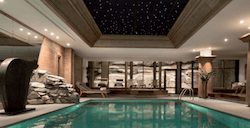
Hotel Le Yule
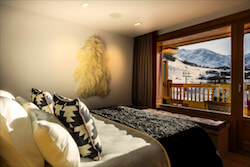
Airelles Val d’Isere Mademoiselle
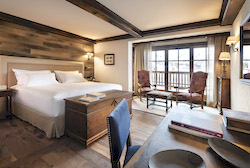
Hotel Avenue Lodge
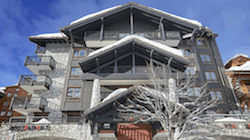
Hotel Le Blizzard
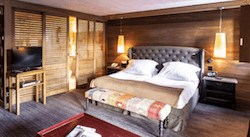
Hotel Christiania
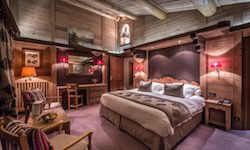
La Savoyarde
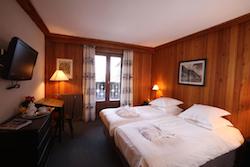
La Mourra Hotel Village
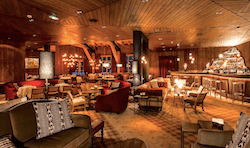
l’Avancher Hotel & Lodge
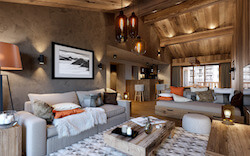
Le Savoie
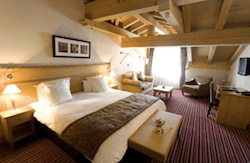
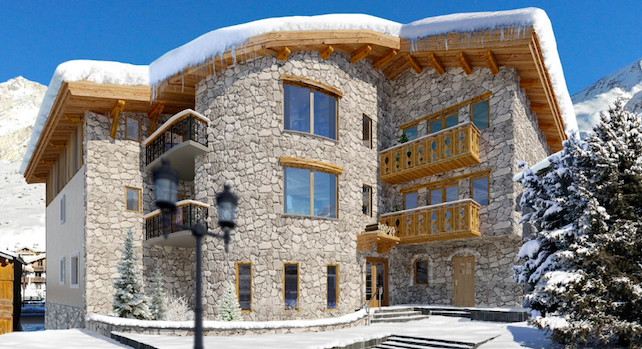
Chalets in the centre
Like the top hotels, lots of chalets are located between the tourist office and bus station roundabouts and anywhere within a five-minute walk of Dick’s Tea Bar. Chalet-hotels – hotels that are run for the season entirely by tour operator staff on the same principle as a chalet – are becoming an increasingly popular, cheaper option.
Lhotse
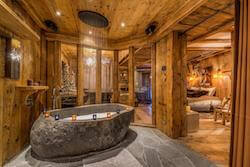
Marco Polo
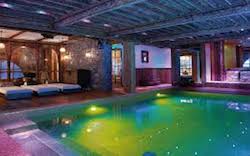
Aspen House
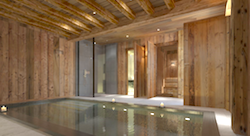
La Petite Ferme
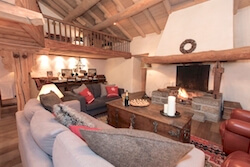
Chalet d’Isere
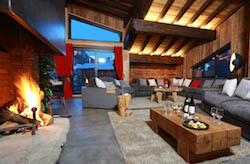
Chalet Madeleine
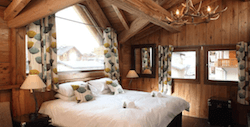
Chalet Hotel Le Val d’Isere
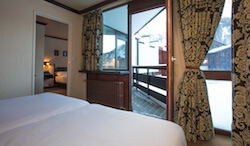
Chalet Lusitano
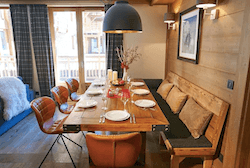
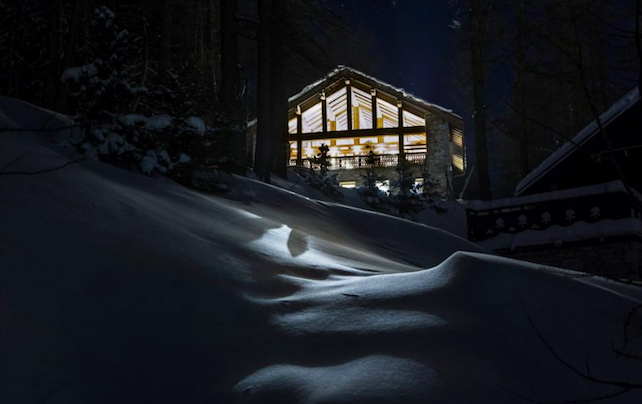
Accommodation slightly further from the centre
Chalets and hotels that are slightly removed from the middle of town won’t necessarily be inconvenient for the skiing – on the contrary, they are either close to the ski bus stop or near one of the lifts. They are generally quieter, too. Some of them have a chauffeur service, taking you to and from the lifts, and others will ferry you to and from the shopping and nightlife as well.
Chalet Leon
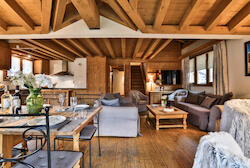
Le Chardon
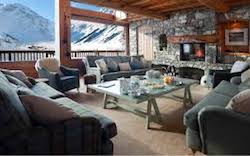
Chalet La Face
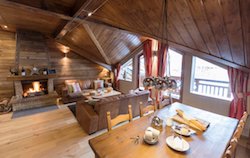
La Toviere
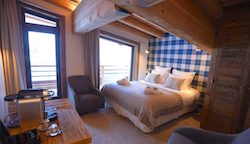
Chalet Husky
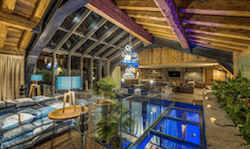
Chalet Daria
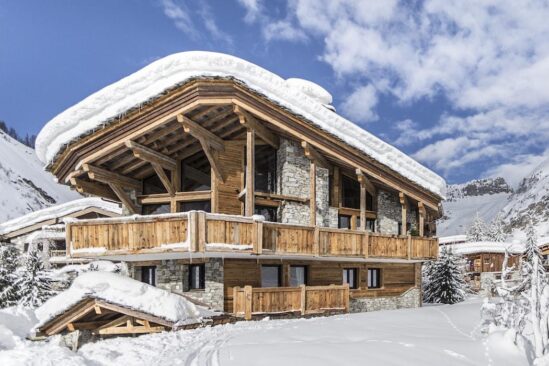
Chalet Inoko
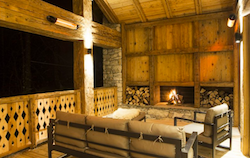
Refuge de Solaise
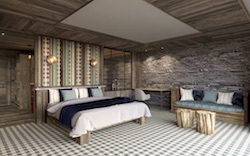
Good-value accommodation
Good news – you don’t have to spend a fortune to stay in the middle of Val d’Isere. There are apartments in the centre of town, and obviously others further afield in locations like La Daille.
Residence La Daille
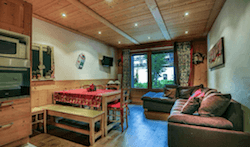
Residence Les Chalets de Solaise
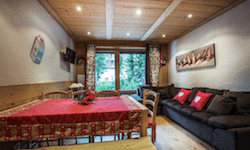
UCPA
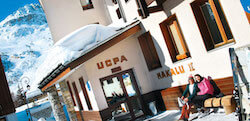
If you’re booking your own accommodation and flights, rather than taking a package, you will need a transfer to Val d’Isere. That’s where SnowDrone comes in. It’s a transfer company actually based in the resort, offering sensibly-priced shared as well as private transfers from and to Geneva – and their vehicles have wifi. Other recommended transfer companies include Europetransfer, Alpine Cab, and Taxi Val d’Is. For more ideas on where to stay, read my post on Conde Nast Traveller.
Where to Eat in Val d’Isere
Val d’Isère seems starved of truly great restaurants in town for a ski resort of such international calibre. Maybe it’s all those half-board chalets? Don’t despair; you just need to know where to look. Dinner out is never a cheap business in any Alpine ski resort, and Val is no exception. La Baraque, next to the Galerie des Cimes, is run by a famous Val restaurateur and attracts locals and international visitors. However, it has become very expensive.
L’Etincelle is situated on the piste at the foot of Solaise. It’s a lavish lunch and evening venue, with meat grilled on an open fire and gourmet pizzas as its specialities.
Other hits include the restaurant in l’Avancher, which has a relaxed atmosphere; La Luge in the Blizzard Hotel vies with The Fondue Factory for the title of cheesiest restaurant in town. The Fondue Factory houses a collection of more than 200 pairs of skis belonging to the owners, the Killy family, which was started in 1946 by Robert Killy. Le Lodge, next to Dick’s, has classic fare – everything from pasta and steaks to inescapable cheese dishes – at moderately sensible middle-range prices. La Casserole (+33 479 41 15 71) is pretty big on fondues and is in the same vein, with prices that don’t require you to take out a second mortgage.
La Taverne d’Alsace, below the three-star Hotel Kandahar, services an extraordinary number of ex-pat Alsatians (like Jean-Claude Killy) who live in Val, along with the rest of us who can’t survive for long without choucroûte, foie gras and other regional dishes. Le Salon des Fous (+33 479 00 17 92) is on the same road, near the tourist office and is highly popular with locals – a good sign. Restaurant l’Alpin (+33 7 87 97 22 01) is a new place for dining in the heart of the old village, offering traditional home cooking.
Arctic Juice & Cafe dubs itself ‘the World’s First Mountain Energy Café’ (it also has branches in Meribel and Verbier). This is the only place in the resort for people wanting healthy veggie and organic food, with dairy-free and gluten-free diets catered for. Another lunchtime venue open in the evening is the converted bus garage, appropriately named Le Garage. It offers pizzas and sharing dishes such as spicy chicken tacos, baba ganoush, and charcuterie.
La Table de l’Ours is in the five-star Hotel Les Barmes de l’Ours. There are a lot of bears around here, as well as loads of sleekly rich Parisiens. It’s a bit stuffy and formal, but the food is worth the visit. The atmosphere is more Big City than a ski resort – just make sure you have sufficient funds to pay the bill. Bambou is open from 10am to 10pm every day of the week, serving gourmet Asian food, including sushi and Pad Thai.
Eating on the mountain in Val d’Isere
A handful of establishments stand out. La Peau de Vache has risen through the ranks to the point where some now consider this to be the best mountain eatery. It’s halfway down La Face and can be reached by the Boulevard Express chair. Giant gourmet burgers are the house speciality.
Another good one is the little Edelweiss restaurant on the Mangard blue run, which slopes down from Le Fornet cable-car. It’s rustic with a log fire, and you can eat carefully prepared, unpretentious dishes in pleasant surroundings. Le Trifollet (+33 479 41 96 99), on the piste immediately above La Daille, is family-friendly. Nearby Maison Louly receives some excellent reviews: “…the service was really good and the food was fantastic. The portions were huge, (maybe a bit too big) most people couldn’t finish their meal. The staff were really nice and attentive.”
Another offering is La Cascade, at the foot of the glacier above Le Fornet. Les Marmottes, next to the terrain park between Bellevarde and La Daille, is an excellent-value ‘self’.
The Le Refuge de Solaise is an on-mountain hotel which is a lunchtime hotspot for those with deep pockets. At the bottom of Solaise, you’ll find L’Etincelle, which serves homemade dishes such as creamy burrata with organic olive oil, fleur de sel and ground pepper, and Sardinian truffle bread.
La Folie Douce , Val d’Isere, at the top station of the La Daille gondola. Waiter-service La Fruitiere, adjoining it, has excellent food served imaginatively in the surroundings of a distressed Savoyard dairy, which it is named after. Try the cheese room and the giant air-conditioned wine cellar in the basement, where parties share a vast table.
This setup allows parents with teenagers to enjoy a gourmet lunch whilst younger members of the group munch on steak hache next door. Money is saved, and everybody gets a meal to suit their taste. The best value of all is the indoor picnic area up the mountain at the Solaise Day Lodge – it even has microwaves for warming up your food.
Where to Party in Val d’Isere
We hope someone takes the initiative about pricing soon, before Val d’Isère loses its mojo. The apres-ski is not bad, by French standards, and there are certainly a lot of bars – but it’s not on the same level as St Anton, Ischgl, Verbier or Zermatt, and the clubbing is not all it’s cracked up to be.
Dick’s Tea Bar has pretty much got the monopoly for late-night partying among the Brits, with Doudoune Club the only serious rival.
Most of the early partying happens in the famous Folie Douce at the top of La Daille gondola, which has since opened more branches in Val Thorens, Meribel, Alpe d’Huez and Megeve. Thursday and Friday afternoons are when it’s at its best.
Cocorico is an apres-ski bar on the piste at the Rond Point, and has stolen some of the thunder from the Folie Douce in recent years. It has live music and attracts homeward-bound skiers. The advantage over its much more famous rival is that you can fall out of the bar into a bus when it’s time to rush home and freshen up before dinner.
Wine bars and hotels for cocktails
We particularly enjoy La Cave sur le Comptoir, an intimate wine bar where you can get a decent coup de rouge and actually hear what your companions are saying. Le Salon des Fous, close to the Tourist Office roundabout, is a good meeting place and is always busy – you can eat here, too.
The old standby is the bar of the Blizzard Hotel, where it’s said you might run into French film stars. Then there’s Le Jack lounge bar at the Aigle des Neiges hotel. It’s a bit bling with its cow-hide seats – but it’s still lovely and spacious. The lounge bar in the Avenue Lodge Hotel on the high street has a cool interior and is a good place for a G&T. The bar at Les Barmes de l’Ours is a bit of a hike out from the middle of town. Still, it’s a stylish place…and you might bump into the celebrities who stay here because it’s more private than the high street hotels.
Live bands and late nights in Val d’Isere
After dinner, your first stop is Victor’s, which has a happy hour from 9pm to 11pm and is a favourite among locals. This isn’t one of those sophisticated places we were talking about earlier – just really nice and buzzy, and usually not too full. Saloon is where the seasonnaires go to party. There’s a DJ, live music, and a Happy Hour from 3-5pm. It’s also convenient for Le Petit Danois – just across the road – which is the favourite haunt of Scandies. Blue Note is hidden behind an unremarkable door opposite the ESF office. It’s ideal for a quiet drink, the best Bloody Marys in the resort and Young’s London Ale.
By now, the evening should have acquired some momentum. Dick’s runs an after-dinner club from 10pm before becoming a full-on nightclub from 12.30-5am. As we said earlier, its late-night rival is Le Doudoune, in the basement of Cocorico on the edge of the snow at the Rond Point des Pistes. It’s open until 5am with a free shuttle bus to get you home.
Val d’Iseres’s non-ski activities include watersports at the Centre Aquasportif, which has a spa, climbing wall and gym. There is dog-sledding, ice-floating (wear a wetsuit and the ice is broken for you), and ice-climbing.


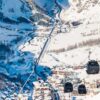
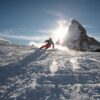






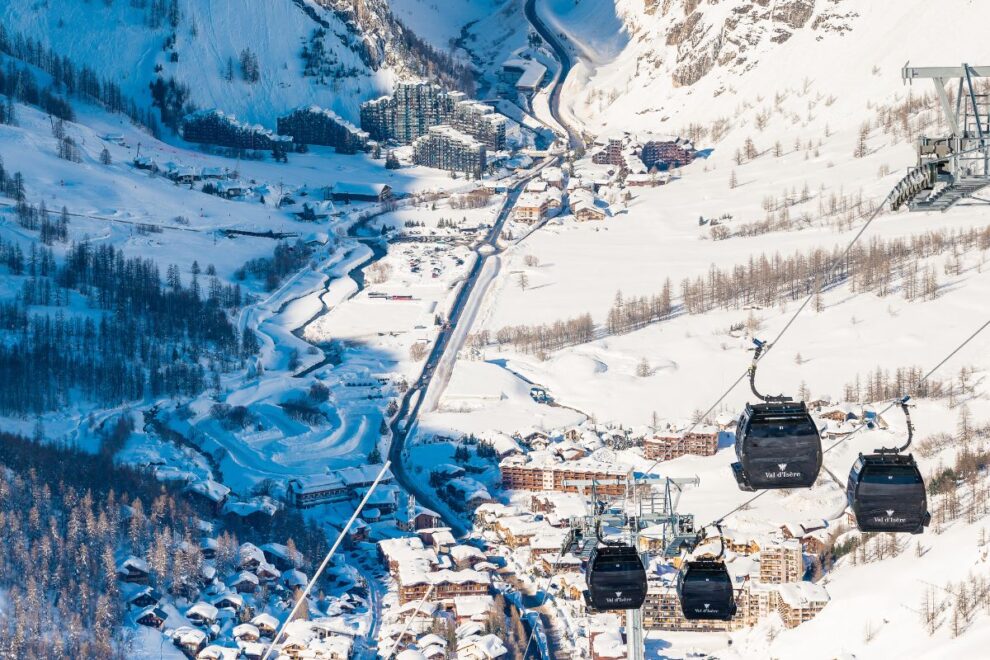
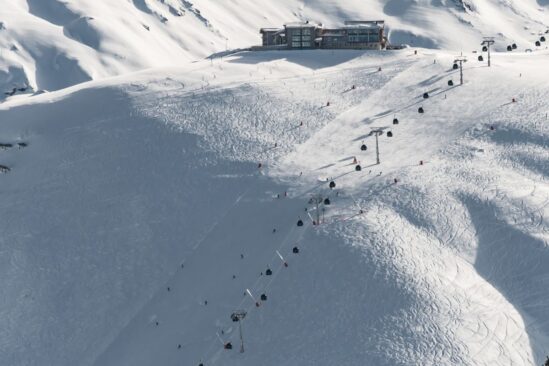
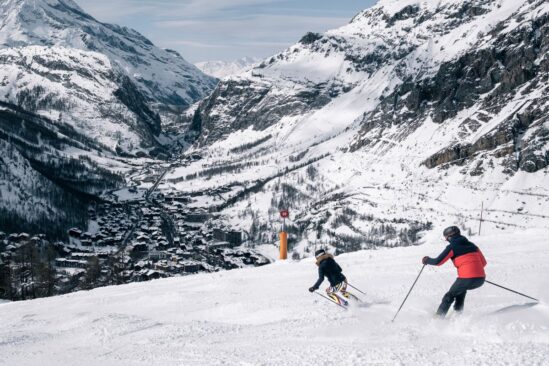
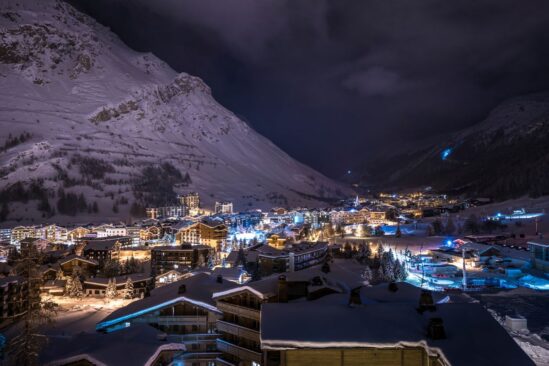
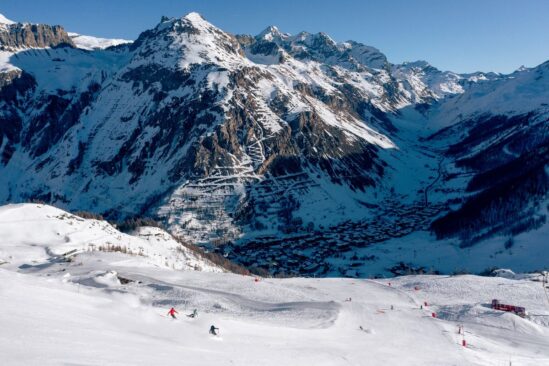
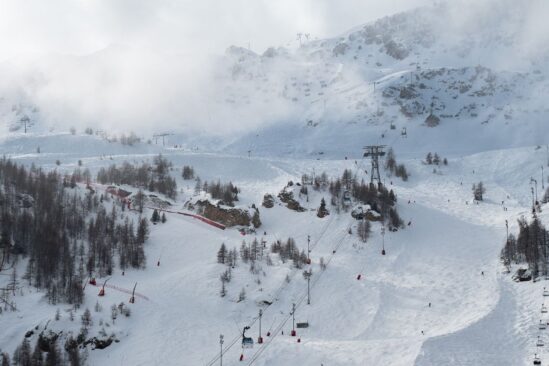
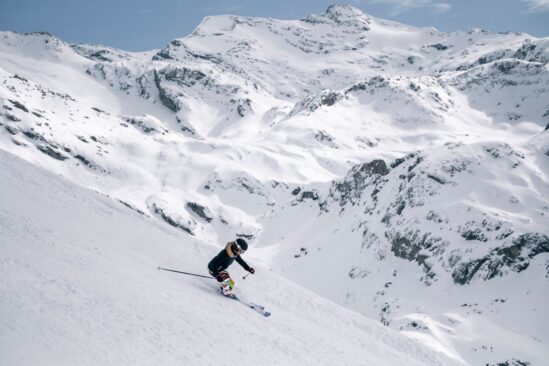
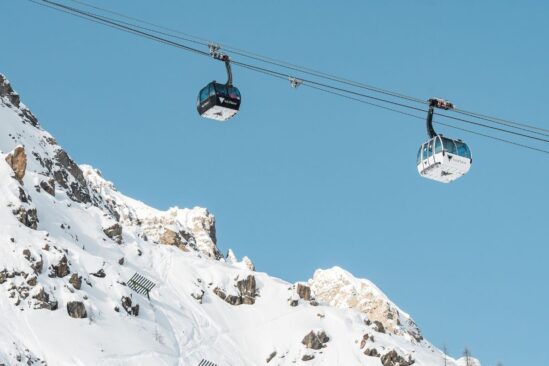
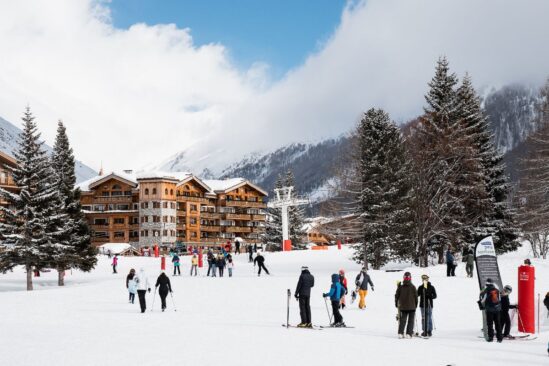
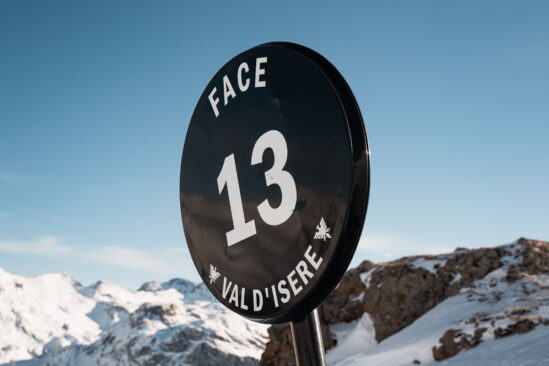
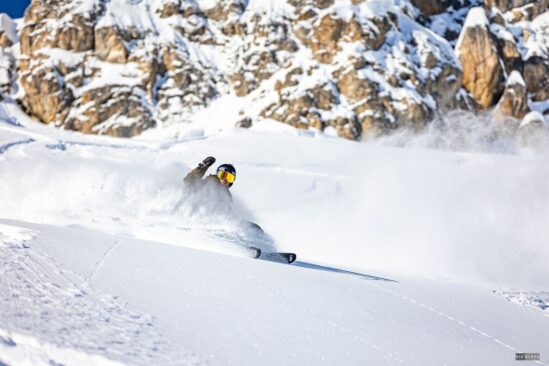
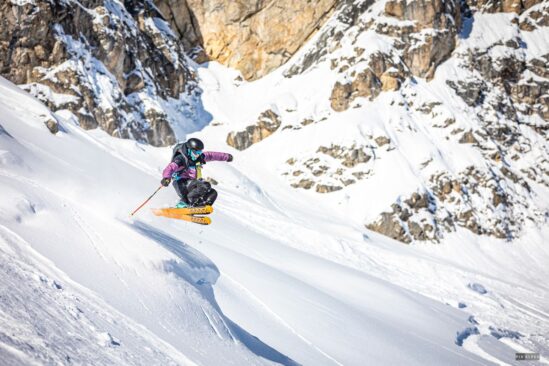
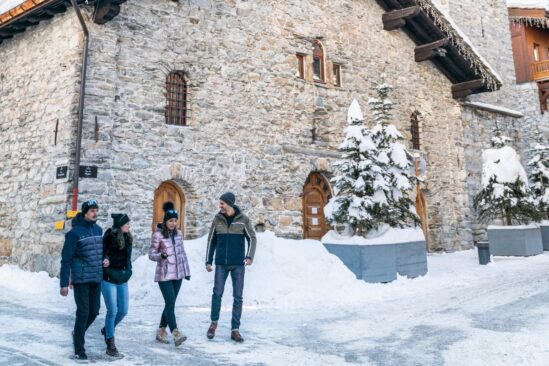
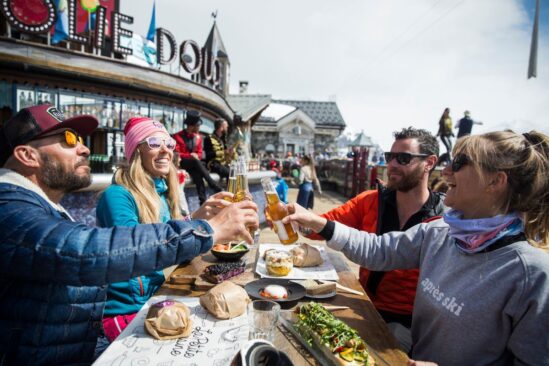
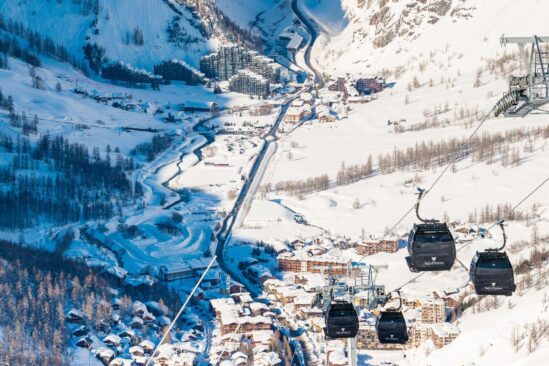
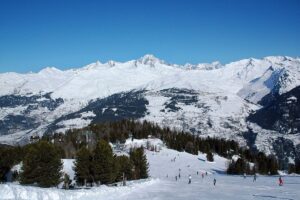

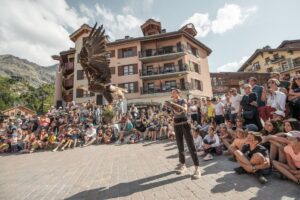
Add Comment